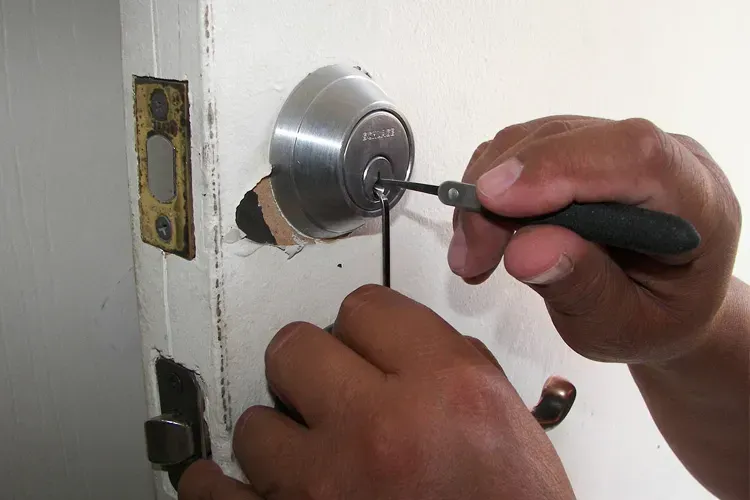Hacking Smart Locks: How Vulnerable Are They?
Smart locks have revolutionized home and business security, offering keyless entry, remote access, and integration with smart home ecosystems. However, with convenience comes risk. As technology advances, so do hacking techniques, raising concerns about the security of smart locks. Are they truly safe, or are they just another digital vulnerability waiting to be exploited? In this article, we explore the potential weaknesses of smart locks, how hackers target them, and what can be done to protect against these threats.
Are Biometric Locks Worth It? Pros and Cons
How Do Smart Locks Work?
Before diving into their vulnerabilities, it's essential to understand how smart locks operate. Unlike traditional mechanical locks, smart locks use electronic mechanisms controlled via Bluetooth, Wi-Fi, or other wireless protocols. They can be unlocked using smartphone apps, key fobs, biometric data, or voice commands. Many smart locks also feature remote access capabilities, allowing homeowners to grant or deny entry from anywhere.
The integration of these locks with smart home systems adds another layer of convenience but also creates potential attack vectors for hackers. The more connected a lock is, the more opportunities there are for exploitation.
How Hackers Target Smart Locks
1. Bluetooth and Wi-Fi Exploits
Many smart locks rely on Bluetooth or Wi-Fi connections to communicate with their apps or smart home hubs. If these connections are not properly secured, hackers can intercept signals using specialized tools, such as sniffers, to gain unauthorized access.
In some cases, cybercriminals use a technique called "replay attacks," where they capture a lock’s Bluetooth or Wi-Fi signal and replay it later to unlock the door. Outdated encryption protocols or weak security measures make such attacks even more effective.
2. Brute Force Attacks on PIN Codes
Some smart locks allow users to enter PIN codes for access. While convenient, these PINs can be susceptible to brute force attacks—where a hacker systematically tries different combinations until they find the correct one. If a smart lock doesn’t have built-in protections such as automatic lockouts after multiple incorrect attempts, this method can be alarmingly effective.
3. Malware and Phishing Attacks
Hackers often target smart locks by attacking the devices they connect to, such as smartphones or smart home hubs. If a user’s phone is infected with malware, cybercriminals can gain access to their lock’s app and control it remotely. Similarly, phishing attacks trick users into revealing login credentials, making it easy for hackers to take control of their smart lock system.
4. Exploiting Weak Cloud Security
Many smart lock manufacturers store user credentials and lock data on cloud servers. If these servers are not well-secured, they become prime targets for hackers. A data breach can expose sensitive information, allowing attackers to gain access to smart locks remotely.
5. Physical Tampering and Side-Channel Attacks
Not all hacking is digital. Some cybercriminals exploit hardware vulnerabilities, using tools to physically manipulate smart locks. Side-channel attacks, which analyze electromagnetic emissions or sound patterns, can reveal encryption keys or other sensitive data used to secure the lock.
The Risks of Smart Lock Hacking
Unauthorized Entry
The most obvious risk of a hacked smart lock is unauthorized access to your home or business. This can lead to theft, property damage, and personal safety concerns.
Privacy Invasion
A compromised smart lock can give hackers insights into your daily routines, such as when you leave for work or when your home is unoccupied. This data can be exploited for targeted break-ins.
Loss of Control
If a hacker gains control of your smart lock, they can lock you out of your own home or business, demanding ransom to restore access. Such cyber extortion schemes have been reported in various smart security systems.
Compromised Smart Home Security
Smart locks are often integrated into broader smart home ecosystems. A breach in one device can provide hackers with a gateway to other connected devices, such as security cameras, thermostats, and alarm systems.
How to Protect Your Smart Lock from Hackers
1. Choose a Reputable Smart Lock Brand
Not all smart locks are created equal. Opt for brands that prioritize security and regularly update their software to patch vulnerabilities. Look for smart locks that use strong encryption protocols and multi-factor authentication.
2. Regularly Update Firmware
Manufacturers frequently release security patches to fix vulnerabilities. Ensure your smart lock's firmware is always up to date to stay protected from emerging threats.
3. Use Strong, Unique Passwords
Avoid using default passwords or easy-to-guess credentials for your smart lock app. Use complex passwords and enable two-factor authentication (2FA) whenever possible.
4. Disable Unnecessary Features
If you don’t need remote access or voice control, consider disabling these features to reduce potential attack vectors. The fewer connection points a hacker can exploit, the safer your smart lock remains.
5. Monitor Access Logs
Many smart locks provide logs of who accessed the lock and when. Regularly review these logs to identify any suspicious activity and take action if needed.
6. Secure Your Home Network
Since many smart locks rely on Wi-Fi, securing your home network is crucial. Use a strong password for your router, enable WPA3 encryption, and consider setting up a separate network for smart devices.
Is It Safe to Use an Online Locksmith Service?
The Future of Smart Lock Security
As hacking techniques become more sophisticated, so too must the security measures of smart locks. Advances in artificial intelligence and blockchain technology offer promising solutions for enhancing security. AI-powered anomaly detection can help identify unauthorized access attempts in real-time, while blockchain can create decentralized, tamper-proof authentication systems.
Additionally, biometric authentication, such as fingerprint or facial recognition, is becoming more prevalent, reducing the reliance on easily hackable PIN codes and passwords.
Conclusion: Are Smart Locks Worth the Risk?
Smart locks provide unmatched convenience, but they also introduce new security challenges. While no system is completely hacker-proof, taking proactive measures can significantly reduce the risks. Choosing a reputable brand, keeping software updated, and following cybersecurity best practices can go a long way in ensuring your smart lock remains a secure and reliable component of your home security.
Ultimately, the decision to use a smart lock comes down to weighing convenience against security. If used responsibly with the right safeguards in place, smart locks can be a valuable addition to modern security systems. But as technology continues to evolve, staying informed and vigilant is key to keeping hackers at bay.
Call Us Any Time!









